Pisa used to be a principal Roman port, however the Arno River has seeing that silted up, leaving it 10 kilometers inland. In 1063, Pisa’s navy used to be instrumental in defeating the Saracens at Messina and Palermo, establishing Pisa’s upward jostle to manipulate Mediterranean shipping. The cathedral was once constructed in thanks for these victories and enriched by way of booty introduced returned by using its fleet in the First Crusade.
Commerce and enterprise flourished, and Pisa’s architects, sculptors, and painters grew to be well-known all through Europe. In 1284, rival Genoa defeated Pisa’s navy, and in 1406, Pisa fell to Florence. But the ruling Médici took a eager hobby here, establishing bridges and canals, so the town endured to thrive.
Pisa is the birthplace of Galileo Galilei (1564-1642), and legend holds that the cathedral’s swaying chandelier stimulated him to format the clock pendulum. Pisa’s essential traveller sights – the Leaning Tower, Cathedral, Baptistery, and Campo Santo – are shut collectively in the Campo dei Miracoli (Field of Miracles), and include a UNESCO World Heritage site.
If you are thinking the place to devour or go buying in Pisa, observe Via Maffi from the Campo dei Miracoli to the busy Borgo Stretto, lined with shops, cafés, and restaurants.
For greater ideas, see our listing of the pinnacle traveler points of interest in Pisa.
- The Leaning Tower of Pisa
The Leaning Tower of Pisa

The Leaning Tower of Pisa
Every infant has heard of it, and each traveler to Pisa probable heads first to what is absolutely the world’s most well-known tower: La Torre Pendente, the leaning campanile standing subsequent to the cathedral.
The basis stone was once laid in 1173, when Pisa used to be Italy’s most effective maritime republic, and its loggia-like tiers had been modeled after the cathedral facade. Even earlier than the 1/3 story was once completed, the tower had already begun to sink alarmingly on its south side. When counterweighting the north facet and barely growing the peak of the south partitions proved ineffective, development was once halted.
Almost a hundred years later, work resumed, trying to counteract the tilt by means of angling the higher tales greater closer to the vertical. The open bell-chamber was once introduced to the white marble tower in 1350-72, by way of Tommaso Pisano.
Until 1990, travelers climbed the spiral staircase of 294 steps to the pinnacle platform, however with the perspective of tilt growing by using one millimeter a year, it used to be calculated that the tower would topple through the yr 2000.
When rotational motion round the axis used to be additionally detected, growing the risk, the tower was once closed in 1990 to enable an high priced software of restoration. When the tower re-opened in 2001, the 5.5-degree tilt had been modified to about 3.99 degrees, leaving the pinnacle out of line via 3.9 meters. You’ll additionally observe a mild curve in the tower, ensuing from tries by using a number of architects to right its tilt for the duration of construction.
Address: Piazza dei Miracoli, Pisa
Accommodation: Where to Stay in Pisa
- Cathedral of Santa Maria Assunta
Cathedral of Santa Maria Assunta

Cathedral of Santa Maria Assunta
The definitive instance of the Pisan architectural style, the Cathedral of Santa Maria Assunta is a five-aisled Romanesque basilica of white marble designed by way of Pisan architect Buscheto. Begun in 1063, after Pisa’s naval victory over the Saracens, it was once consecrated (still unfinished) in 1118, and in the direction of the cease of that century, a new west the front was once delivered and the foremost apse was once completed.
The embellished arcading on the wonderful façade is persisted spherical the facet walls, and its transepts stop in small apses that venture properly past the aisles. Dominating the complete indoors is a well-proportioned oval dome. In the apse is a 13th- to 14th-century mosaic of Christ enthroned between the Virgin and John the Evangelist, by means of Cimabue. Don’t leave out the bronze doorways of the Porta di San Ranieri, with scenes from the lives of the Virgin and of Christ.
The creative spotlight in the cathedral is the pulpit through Giovanni Pisano, which is comparable to the one in the Church of Sant’Andrea in Pistoia. It used to be created between 1302 and 1311, and Giovanni Pisano’s lively fashion and rounded varieties mark a departure from the extreme fashion of his father Nicola, whose greater angular pulpit you can see in the baptistery.
The pulpit is supported on columns (the shorter ones borne on lions) and figures of the Archangel Michael, Hercules, and Christ, with the Four Evangelists round the base. Relief panels round the pulpit exhibit New Testament scenes.
Address: Piazza dei Miracoli, Pisa
- Baptistery
Baptistery
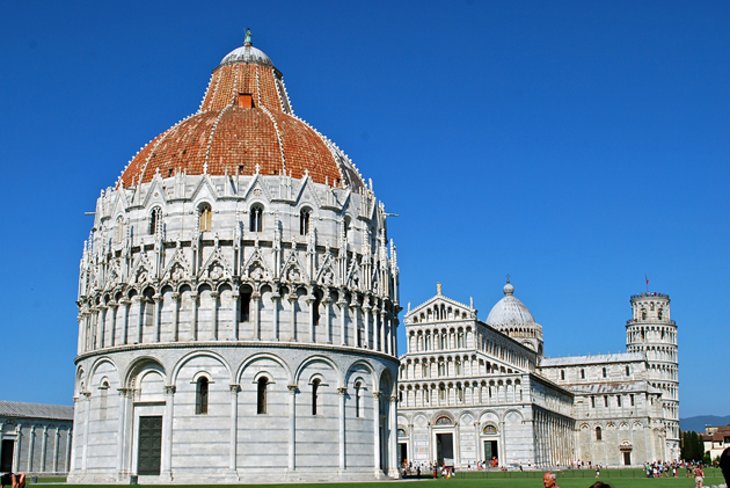
Baptistery
West of the cathedral, the free-standing baptistery used to be begun in 1153, nearly a hundred years after the cathedral however nevertheless in the wonderful days of Pisa. It includes out the layout of the cathedral by way of the usage of the identical constructing material, patterning with distinct colours of stone, and by using the blind arcading and dwarf galleries.
But as work persevered over two centuries, it commenced to exhibit the transition from Romanesque to Gothic between the decrease and the top levels. In 1260, Nicola Pisano took over accountability for the project, accompanied (1285-93) by way of his son Giovanni. The conical dome stands on 4 pillars and eight columns, developing an impact of mild and solemnity.
Like the cathedral, the baptistery’s unquestioned spotlight is the free-standing marble pulpit, a 1260 masterpiece by way of Nicola Pisano and one of the extremely good masterworks of Romanesque sculpture. It is embellished with alleviation panels depicting New Testament scenes with exceptional creative intensity.
Be positive additionally to see the font via Guido da Como (1246) and the figures of saints by way of college students of Nicola and Giovanni Pisano. The baptistery is additionally first-rate for its brilliant acoustics, which the courses commonly make a factor of demonstrating.
Address: Piazza dei Miracoli, Pisa
- Campo Santo (Sacred Field)
Campo Santo (Sacred Field)
Campo Santo (Sacred Field)
According to neighborhood le
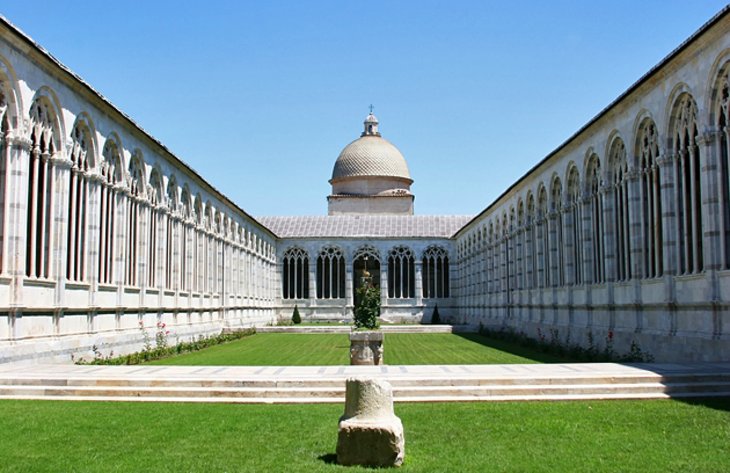
gend, Archbishop Ubaldo dei Lanfranchi back from the Fourth Crusade with numerous shiploads of earth from Golgotha, so that the residents of Pisa may want to be buried in sacred soil. The development of the Camposanto (Sacred Field) to keep it commenced in 1278, a giant rectangular cloister whose gallery of arches embellished with Gothic tracery open into the courtyard.
On the flooring of the cloister are the graves of Pisan patricians, and round the aspects are Roman sarcophagi. The partitions have been blanketed with 14th- and 15th-century frescoes, however a fireplace prompted through artillery bombardment in 1944 melted the lead roof, both destroying or badly unfavorable the frescoes.
The upside of this tragic loss used to be the uncovering of the unique artists’ sketches in pink pigment on the partitions underneath. These sinópie had been the artist’s most vital contribution to a fresco, specifying each and every element of a composition; the genuine portray of the fresco used to be regularly left to college students and assistants.
These sinópie are now shown, with reproductions of the corresponding frescoes, in Museo delle Sinópie. Those frescoes that had been saved have been painstakingly restored over the years and lower back to the cloister.
Address: Piazza dei Miracoli, Pisa
- Museo dell’Opera del Duomo (Cathedral Museum)
Museo dell’Opera del Duomo (Cathedral Museum)
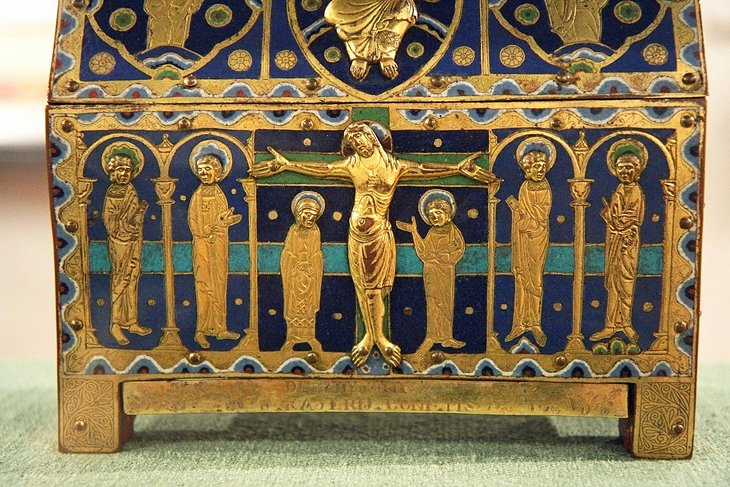
Museo dell’Opera del Duomo (Cathedral Museum) | Holly Hayes / photograph modified
One of the exceptional designed and curated museums in Tuscany is additionally one of the least-visited locations on the Campo dei Miracoli, which is a disgrace due to the fact it provides rather to an appreciation of the artwork and craftsmanship of that era. And it has an introduced bonus for these who do discover it: a remarkable view of the Leaning Tower from the massive second-floor windows.
The cathedral’s museum homes its massive treasury, which consists of invaluable masterworks of silversmiths, prosperous embroideries, tombs, sculpture, and paintings. Many of the sculptures as soon as adorned a number of constructions of the complex, however have been introduced indoors for safety many years in the past – earlier than they have been difficulty to current atmospheric pollution, so they are in such right circumstance that they appear to have been created the day prior to this alternatively of centuries ago.
The collections, which are properly labeled and described in English, start six centuries ago, with Islamic inlays of coloured marble that as soon as adorned the cathedral, reminders that Pisa’s naval empire prolonged into the Middle East.
So many treasures will trap your eye, however do not pass over the bronze griffin; the timber crucifix by using Borgognone; the Citharoedus David; the Limoges caskets; the works of Giovanni Pisano, most specifically his Madonnas, the magnificent small ivory statue, and the crucifix recognised as the Crocifisso d’Elci.
You may also understand one Roman sculpture, a bust of Julius Caesar sculpted in the course of or quickly after his lifetime, and the picture you have viewed in most records books.
Address: Piazza dei Miracoli, Pisa
- Murale Tuttomondo through Keith Haring
Murale Tuttomondo by means of Keith Haring
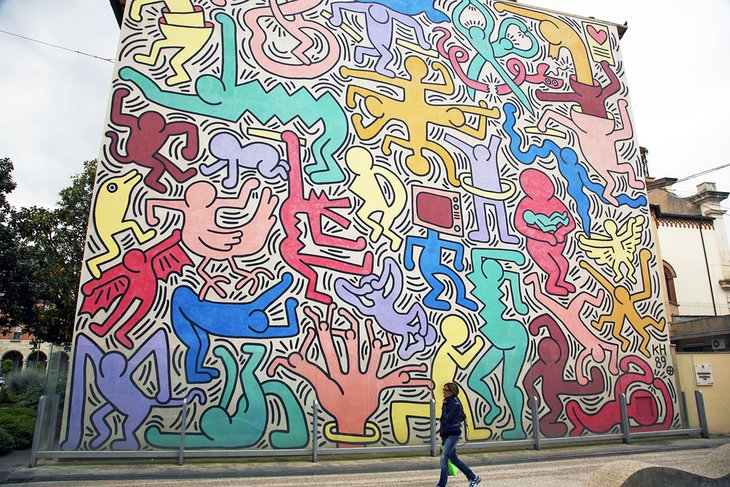
Murale Tuttomondo through Keith Haring | Biggs / photograph modified
In 1989, after a risk come across with a pupil from Pisa, artist Keith Haring used to be commissioned to paint a mural on the rear wall of Sant’Antonio Abate church. The ensuing Tuttomondo (all the world) is one of the biggest murals in Europe, at one hundred eighty rectangular meters, and took Haring a week to complete.
Tuttomondo is one of solely a few out of doors works created by way of Haring for everlasting public display, and he later referred to as it one of his most important. It used to be additionally to be one of his last. He finished solely one different mural earlier than his loss of life in 1990 at age 31.
Thirty figures, painted in vivid hues and in Haring’s caricature style, appear to tumble throughout the wall. Women, men, children, a dolphin, a bat, and different animals combine collectively in an exuberant dance. Haring’s message of concord and love between humans, animals, and nature is as applicable nowadays as it was once in 1989.
- Arsenals & Museum of Ancient Ships
Guelfa Tower
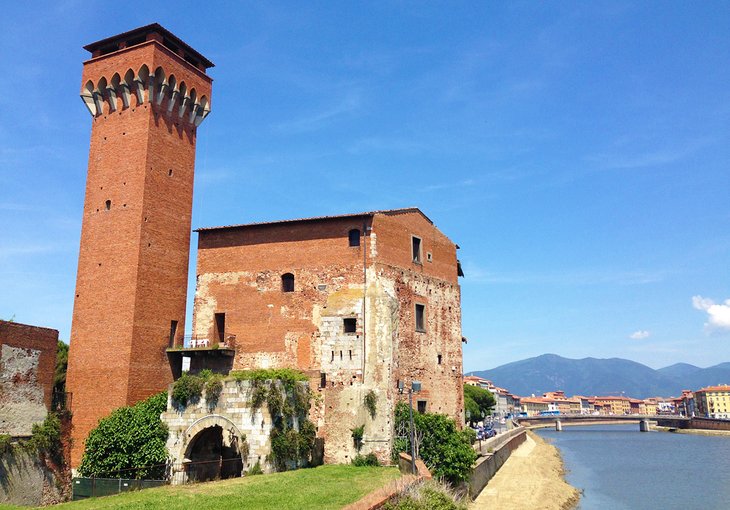
Guelfa Tower
The Arsenals have been constructed between 1548 and 1588 by using Grand Duke Cosimo I de’ Medici to make stronger his naval strength and revive the glory days of Pisa’s Maritime Republic. The giant arcaded sheds had been used to construct 50-meter-long galleys, warships that have been launched at once into the Arno.
The arsenals have been constructed interior the Cittadella, which dates to 1160, however has solely the San’Agnese tower nevertheless intact. The tall Guelfa Tower (which you can climb for sweeping views throughout Pisa and the Arno) was once constructed in the early 1400s and rebuilt after World War II damage.
Museum of Ancient Ships
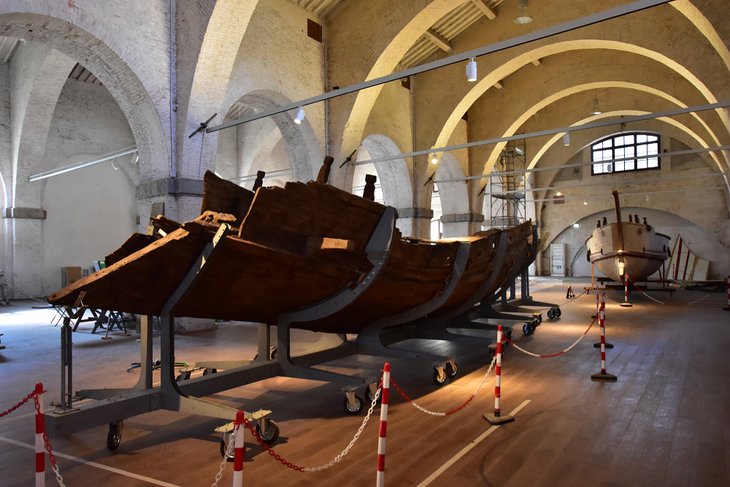
Museum of Ancient Ships | Claudiovidri / Shutterstock.com
After 1543, the Cittadella used to be used as artillery barracks and later transformed into stables for the Dragon knights, who covered Pisa from Barbary pirates. Today, the arsenal serves as a becoming domestic for the Museum of Ancient Ships, showing the excellent finds from excavations in 1998.
In that year, a building task unearthed greater than 30 historical ships relationship from between the 2nd century BC and the fifth century AD – from the Etruscans to the crumple of the Roman Empire. The grand rooms and aisles constructed for the Grand Duke’s ships, now show the restored Roman ships and the artifacts located with them, telling of voyages, routes, day by day existence on board, and shipwrecks.
Address: Lungarno Ranieri Simonelli 16, Pisa
- Santa Maria della Spina
Santa Maria della Spina
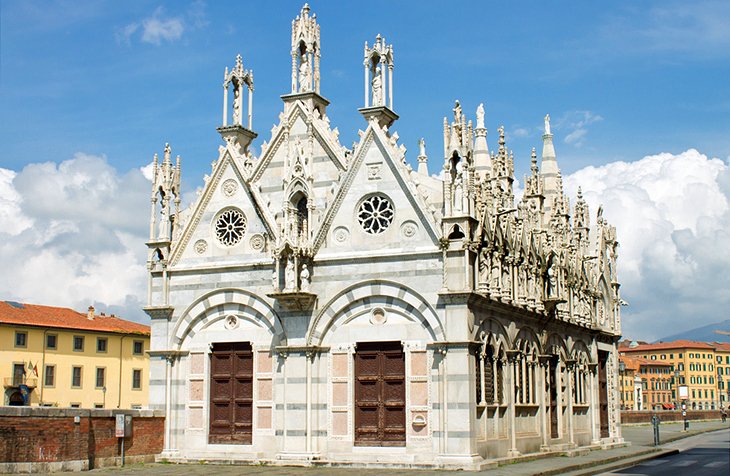
Santa Maria della Spina
The Church of Santa Maria della Spina, on the left financial institution of the Arno, is possibly the first-class recognised of Pisa’s smaller church buildings and truely one of its loveliest. Originally a small oratory sitting proper on the river, it suffered extreme basis damage, and in 1871 it used to be pulled down stone by using stone and rebuilt greater up.
The richly ornate Gothic church owes its title to its possession of a thorn (spina) from Christ’s crown of thorns, introduced to Pisa from the Holy Land. The west the front has two doorways and three exceptional gables, every with a small rose window. On the south facet of the church, a collection of arches enclose doorways and windows, and greater up, a area of interest with figures of Christ and the Apostles.
The constructing is topped by means of tabernacles containing statues, some of them now changed through copies and the originals displayed in the Museo Nazionale. The unique of the Madonna del Latte is additionally in the museum; the one internal the church is a replica.
Address: Lungarno Gambacorti, Pisa
- Stroll alongside Borgo Stretto
Chiesa di San Michele in Borgo on the Borgo Stretto
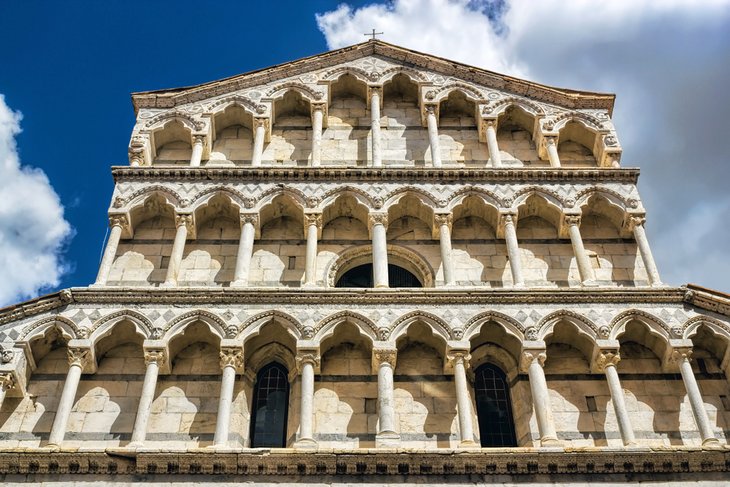
Chiesa di San Michele in Borgo on the Borgo Stretto
Between the rail station and the Piazza dei Miracoli, you will locate the narrow, atmospheric Borgo Stretto, lined through structures from the 14th and fifteenth centuries. Arcades refuge its facets from the solar and rain, and small retail outlets combine with name-brand stores, cafés, and sidewalk vendors.
Borgo Stretto is continually busy, a favored location for Pisans to stroll and shop. Look for Casa Bocca, at the nook of Borgo Stretto and with the aid of Mercanti; it is the residence the place Galileo was once born.
- Palazzo dei Cavalieri
Palazzo dei Cavalieri
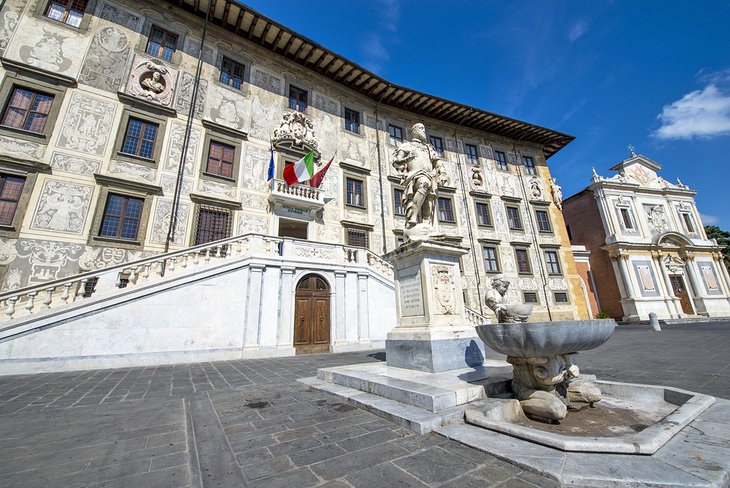
Palazzo dei Cavalieri
This palace in the Piazza dei Cavalieri (Knights’ Square) is additionally acknowledged as the Palazzo della Carovana and used to be at the beginning the Palazzo degli Anziani (Palace of the Elders). In 1562, architect Giorgio Vasari started rebuilding and enlarging it, growing the wonderful Palazzo dei Cavalieri, named after the coaching publications for knights (cavalieri) of the Order of St. Stephen, which had been held here.
The most imposing and ornate constructing outdoor of the Piazza dei Miracoli, its facade is embellished with sgraffito ornament; coats of arms; and busts of six Medici Grand Dukes of Tuscany, from Cosimo I to Cosimo III. The grandeur is more advantageous by means of the projecting roof and the good-looking double staircase main up to the entrance.
Since 1810, the palazzo has housed the Scuola Normale Superiore, an élite university of greater schooling headquartered by means of Napoleon. In front of the constructing is a statue of Cosimo I via Piero Francavilla. On the north facet of the piazza is the Palazzo dell’Orológio, constructed in 1607 for the Order of St. Stephen and incorporating the stays of two early medieval tower houses.
Address: Piazza dei Cavalieri, Pisa
- Palazzo Blu
Palazzo Blu
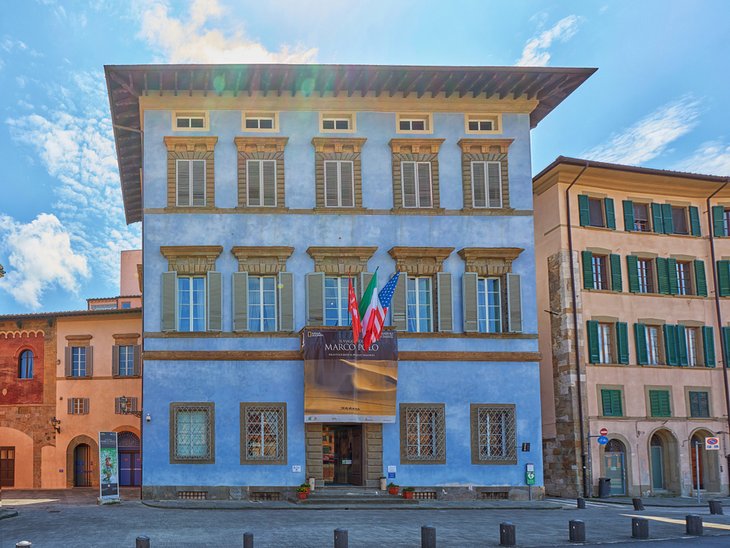
Palazzo Blu | MeloDPhoto / Shutterstock.com
Palazzo Giuli Rosselmini Gualandi, greater regularly referred to as Palazzo Blu, homes prosperous everlasting collections of art work and different art, the works of Italian artists from the 16th to the twentieth century. In addition, its collections encompass best furnishings and early coins.
Beyond these collections are a persevering with collection of distinctive exhibitions that may additionally cowl some thing from science to cinema, or might also characteristic the works of a single artist, such as M.C. Escher or nearby favorite, the groundbreaking Italian modernist Amedeo Modigliani.
Address: Lungarno Gambacorti 9, Pisa
- Basilica Romanica di San Piero a Grado
Basilica Romanica di San Piero a Grado
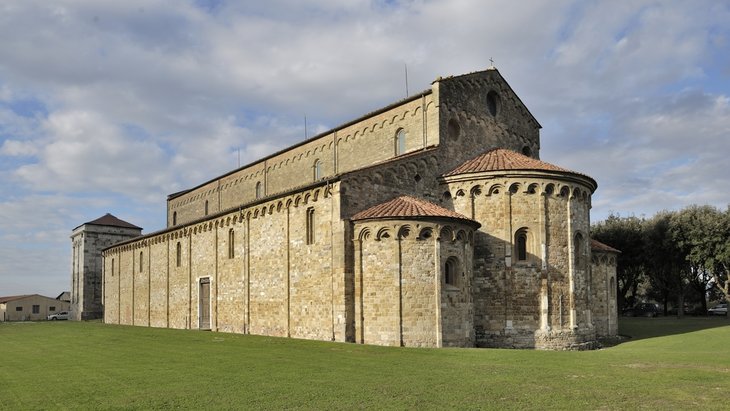
Basilica Romanica di San Piero a Grado
Away from the core of Pisa, on the avenue to its marina, stands the 10th-century basilica constructed at the ancient port of Pisa, at the spot the place St. Peter is believed to have landed in Italy in forty four AD. The website is nicely inland today, however 2,000 years ago, the Mediterranean prolonged this far.
The church used to be built and modified over two centuries, and its indoors is lined with frescoes, their shades nonetheless vibrant. At the again of the church, excavations divulge foundations of an in the past Paleo-Christian church and even before Roman buildings.
Address: Via Livornese, Pisa
- Orto Botanico (Botanic Garden)
Orto Botanico
Orto Botanico
Also recognised as
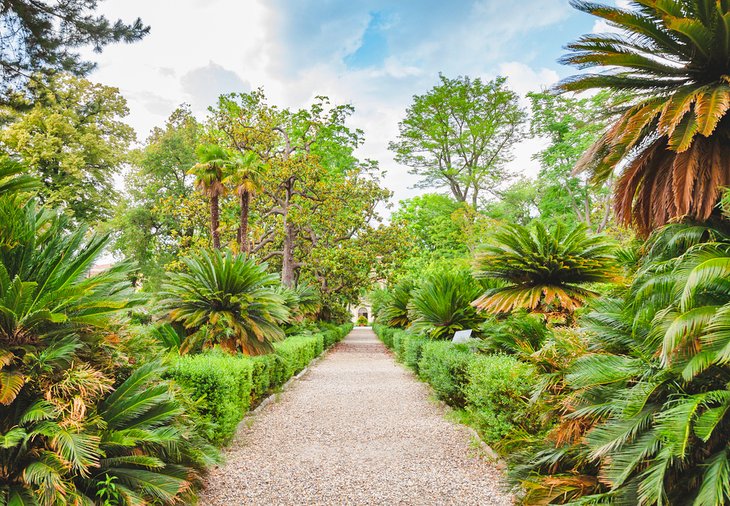
the Orto Botanico dell’Università di Pisa, Pisa’s botanical backyard used to be the first college botanical backyard in Europe, centered with the aid of Cosimo I de’Medici in the mid-1500s. You can discover a number of environments and collections, each outside and in its various buildings, to discover herb gardens, an arboretum of uncommon trees, water gardens, and greenhouses. One of these is Europe’s first iron-framed glasshouse.
Be positive to see the historical botany college courting from the late 1500s, with its façade adorned in seashells. After Pisa’s nearly overwhelming abundance of Renaissance artworks, this is a fantastic and restful area to go to in the center of the city.
Address: Via Luca Ghini 5, Pisa
- Santo Stefano dei Cavalieri
Santo Stefano dei Cavalieri
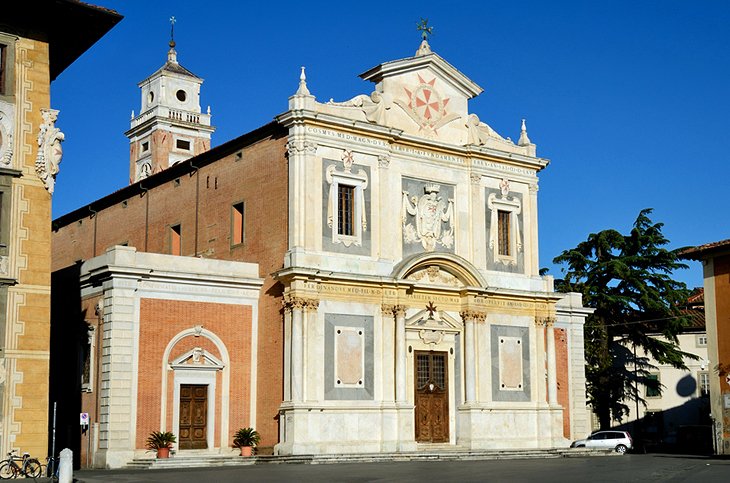
Santo Stefano dei Cavalieri
The Church of Santo Stéfano, like the palaces surrounding Piazza dei Cavalieri, was once designed by using Vasari. It used to be firstly constructed in 1565-69, and in 1594-1606, a marble facade used to be added, designed by means of Giovanni de’ Médici.
The two 17th-century aspect wings had been at the start changing-rooms for the knights of the Order of St. Stephen, who wore their ceremonial costume for services. These rooms had been later integrated into the church as aisles, however as they are linked with the nave solely with the aid of two doorways on every side, the first influence interior is of an aisleless church.
In the panels of the coffered ceiling are art work displaying the records of the Order of St. Stephen, whose characteristic used to be to shield the town in opposition to enemy raids. On the partitions are trophies and captured enemy flags recalling Pisa’s Turkish wars. Be certain to see the richly adorned excessive altar (1709), with the throne of the martyred Pope Stephen I (254-257) and the Baroque organ.
Address: Piazza dei Cavalieri, Pisa
- Museo Nazionale di San Matteo (National Museum of San Matteo)
Beyond the blockbuster points of interest of the Campo dei Miracoli, Pisa provides a variety of much less customary sights and matters to do. The former Benedictine Convent of San Matteo now homes Pisa’s National Museum of San Matteo, presenting sculpture and photographs of the Tuscan faculties from the 12th to the fifteenth centuries.
Particularly interesting are the sculptures from quite a number Pisan church buildings added right here to hold them from climate and environmental harm and changed via copies. Look specially for the originals of statues via Giovanni Pisano from the baptistery and the well-known Madonna del Latte (c. 1340) from the Church of Santa Maria della Spina.
Paintings by using a wide variety of 12th- and 13th-century artists encompass spiritual subjects, and you will locate first-rate examples of illuminated books and manuscripts.
Address: Lungarno Mediceo, Piazza San Matteo 1, Pisa
- Go to the Beach
Tirrenia beach, Pisa
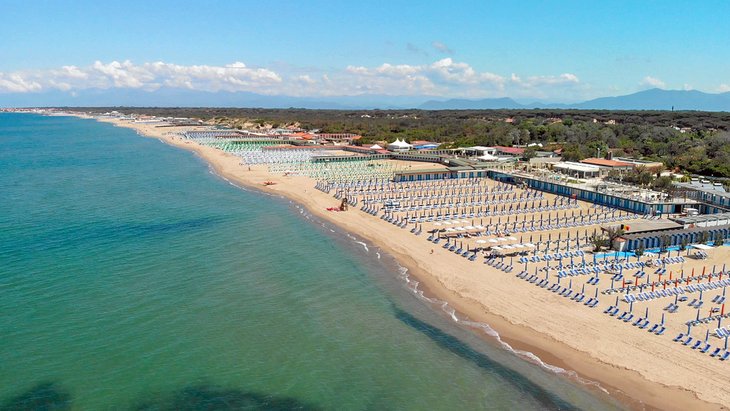
Tirrenia beach, Pisa
There is no escaping the truth that summers in Pisa are hot. A proper way to cool off after sightseeing is to head to the shore. The Arno River flows into the Mediterranean Sea simply to the west of central Pisa, and from the port south to Tirrenia, the coast is lined with a succession of sandy beaches.
These are lively, busy bands of sand described by way of non-public seaside golf equipment (stabilimento balneare), which for a day by day charge furnish seaside loungers, umbrellas, and the use of altering tents, showers, and restrooms. Although there are occasional free areas of beach, they are small and crowded; to get the full Italian seashore experience, you must use a stabilimento.
